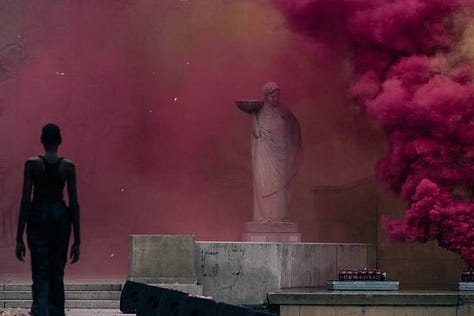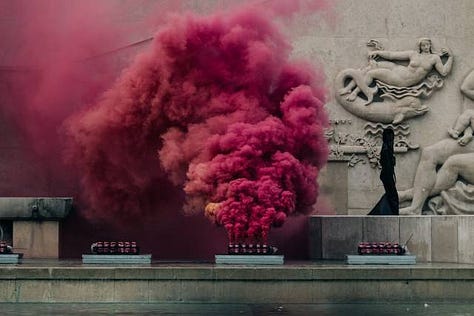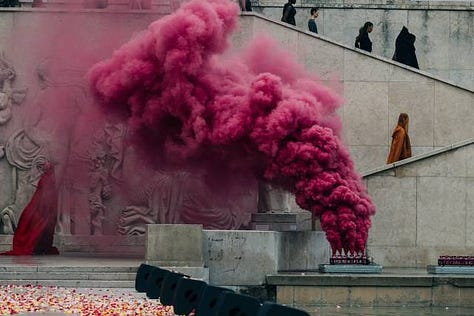Rick Owens: A Symphony of Authenticity, Architecture, and Unapologetic Creativity in Fashion Evolution
Understanding Rick Owens
Rick Owens, the enigmatic fashion designer, is a creative force whose design philosophy is intricately intertwined with his upbringing and personal evolution. Raised in Fresno, California, he had a unique educational journey under the guidance of his father, a social worker, who homeschooled him. This unconventional educational path, fueled by his father's extensive private library, exposed Rick to a rich tapestry of classical philosophy, art, music, architecture, and literature. Unlike those navigating the traditional American public education system, Rick's deep immersion in the arts laid the foundation for his later design prowess, offering him a breadth of references that would shape his distinctive aesthetic.
However, this privileged education came with its complexities. Rick's relationship with his father, whom he described as an intellectual bully with conservative values, created a tension that would become a driving force in his creative journey. The rebellious streak that emerged from this dynamic steered Rick towards punk rock and countercultural influences in the vibrant Californian scene of the 1980s, shaping his identity and setting the stage for his provocative and controversial approach to design.
Transitioning into the realm of fashion, Rick's early experiences involved crafting knock-off garments in Los Angeles. This unorthodox start, focused on deconstructing and reconstructing high-fashion pieces, equipped him with an intimate understanding of garment structure. This hands-on education, distinct from the traditional design school route, laid the groundwork for his later innovations.
What distinguishes Rick Owens in the world of fashion is his unique lens of architectural design. This perspective permeates not only his clothing designs but also his forays into interior design and furniture. His meticulous selection of show venues, aligning the architectural backdrop with the mood of his collections, underscores the depth of his architectural influence. Rick's garments, marked by their structured silhouettes and meticulous attention to detail, showcase his commitment to creating fashion as structured objects, akin to the process of building a piece of architecture.
Delving deeper into the architectural influences present in Rick's work unveils a spectrum that encompasses brutalist, ancient, and classical motifs. Unlike many designers who prioritize the fluidity of fabric, Rick focuses on constructing garments with a rigidity that mirrors architectural elements. This commitment to structured design sets him apart in a field where movement and fabric flow often take precedence.

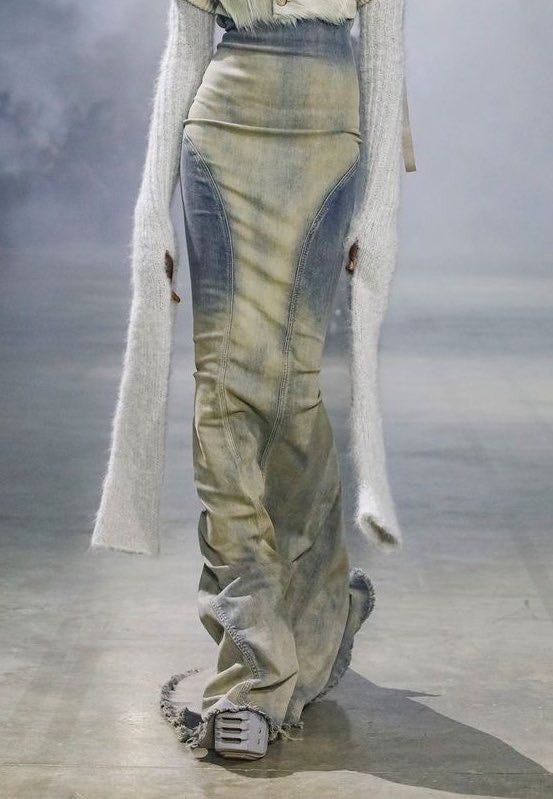
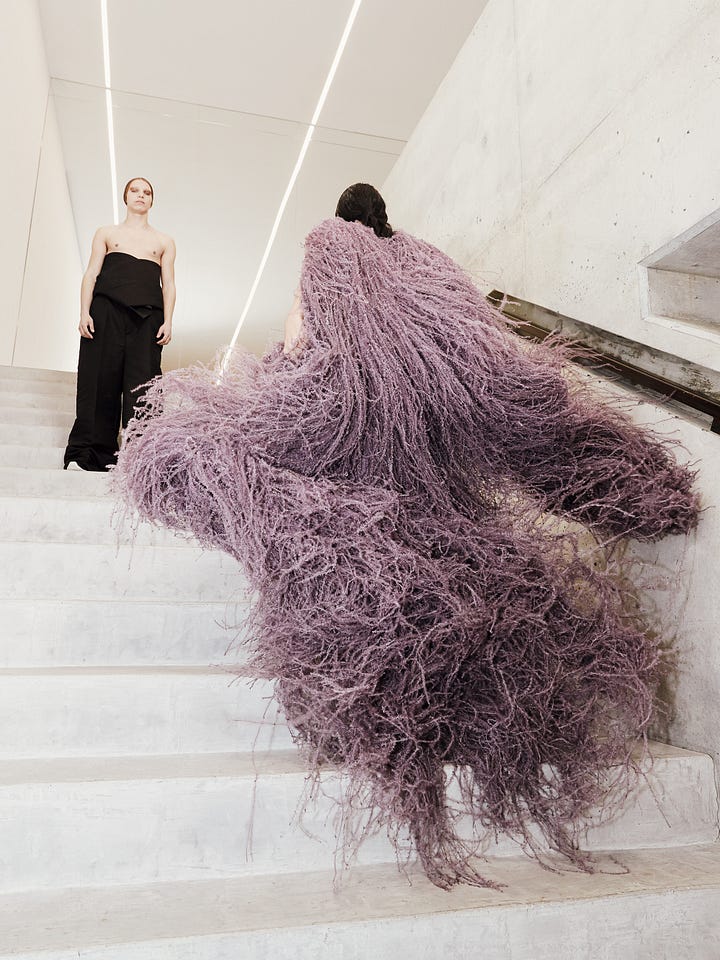
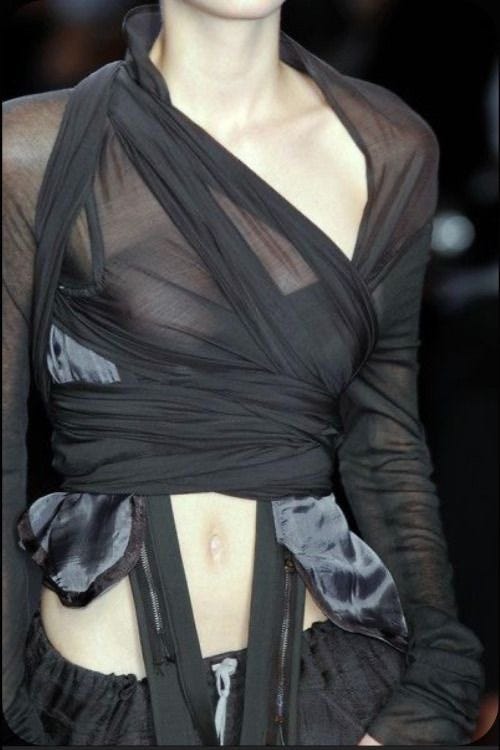
Beyond the realm of fashion, Rick Owens' interest in architecture extends to his furniture designs, where he draws inspiration from brutalist, bauhaus, and classical architectural styles. This interdisciplinary approach further underscores his commitment to a holistic design philosophy that transcends traditional boundaries.
Rick Owens' popularity is not solely anchored in his design prowess. He defies the stereotypes associated with fashion designers, emerging as a well-spoken, well-read, and humble individual. His unique persona, blending ruggedness, punk rock rebellion, and intelligence, places him in a rare category alongside iconic figures like Anthony Bourdain and Indiana Jones. In a society where such multifaceted examples are scarce, Rick's popularity is not just a testament to his iconic designs but also to his embodiment of a higher standard of personal character, challenging societal expectations and inspiring a cult following that craves authenticity in a world saturated with superficiality.
As we delve into the intricate layers of Rick Owens' creative journey and the profound influences shaping his design philosophy, we now pivot to a crucial juncture in his career—the transformative phase of his early experiences as a fashion intern. Rick Owens, with his rebellious spirit and unconventional background, ventured into the world of fashion armed with a unique perspective and a commitment to structured design influenced by his architectural lens. Let's backtrack to the pivotal starting point of his narrative. As he immerses himself in the dynamic and often challenging realm of fashion internships, laying the groundwork for the avant-garde designer he would become.
Rick Owens, initially a student at Otis College of Art and Design, embarked on a distinctive trajectory when he diverged from conventional paths, choosing to drop out and forge his own creative journey. In 1994, he took a bold step, initiating a venture that would not only redefine the landscape of fashion but also shape his avant-garde identity. However, the transformative recognition that catapulted Owens to new heights came seven years later, with the iconic Kate Moss donning one of his designs in the prestigious pages of Vogue Paris. This watershed moment served as a catalyst, propelling him to showcase his work at the esteemed New York Fashion Week in 2002.
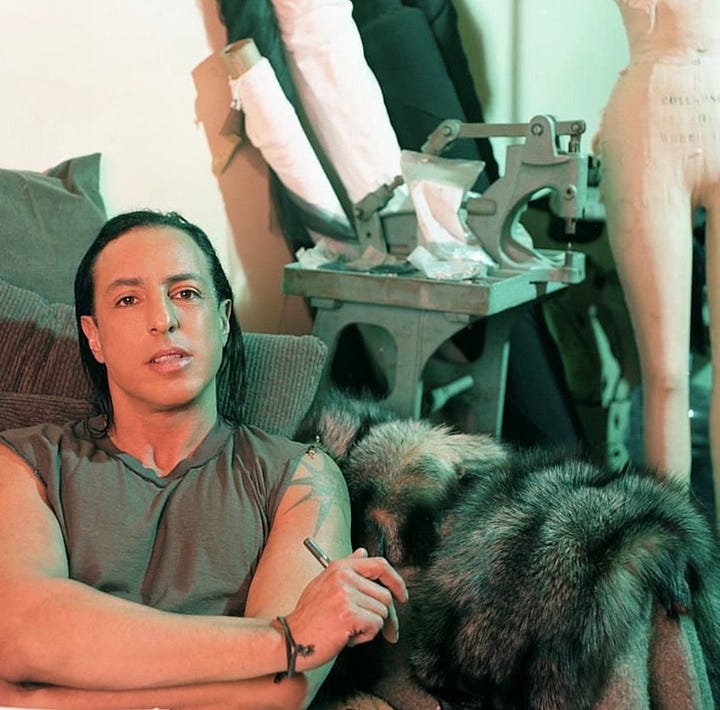
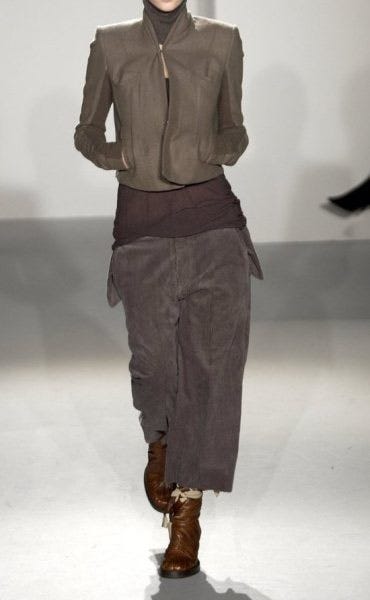
At the core of Rick Owens' design philosophy lies an unwavering commitment to his singular vision, a vision unencumbered by societal norms. His garments, marked by iconic platforms, elongated laces, and distinctive silhouettes, transcend the conventional need for logos or monograms, standing as a testament to his unparalleled aesthetic. The symbolic palette he employs leans heavily on neutral and dark tones, crafting monochromatic looks that communicate volumes without uttering a word.
The narrative of Rick Owens' creative journey intertwines with the presence of Michèle Lamy, his soulmate and eternal muse. Their union creates one of the most recognizable and authentic partnerships in the world of fashion. The duo formalized their bond by tying the knot in 2006, and the profound influence of their relationship continuously shapes Owens' creations, infusing them with a unique essence
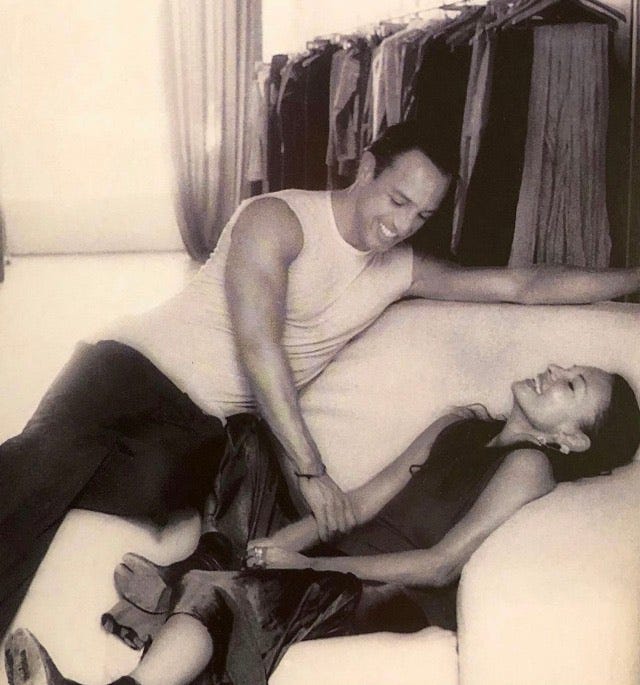
Rick Owens' expansion beyond the boundaries of traditional fashion epitomizes his multifaceted creativity. From venturing into men's fashion to establishing his fur brand, Palais Royale, and seamlessly transitioning into furniture design, Owens' ability to traverse diverse domains underscores his relentless pursuit of innovation. Interior design becomes a canvas for his boundless creativity, with Owens paying homage to artists such as Allen Jones by infusing his stores with provocative displays that challenge conventional notions of both fashion and space.
The pivotal turn in Rick Owens' design language occurs with the Faun SS15 collection, a transformative moment inspired by Nijinsky's 1912 ballet. This collection introduces bold patterns, brighter colors, and overt depictions of sexuality, marking a departure from Owens' earlier minimalist, dark aesthetic. While this shift stirred contention among diehard fans, it authentically represents a genuine development rooted in Owens' personal experiences and artistic growth.
The recent shift towards glam in Owens' work has evoked polarized opinions. Some resist the departure from the dark, minimalist palette defining his earlier collections, while others embrace the infusion of color and sexuality as a bold evolution. Regardless of one's stance, this shift is undeniably executed with artistic finesse, seamlessly integrating foundational elements from earlier collections into a new, vibrant narrative.
At the heart of Owens' concept of empowerment lies a distinctive philosophy—an unconventional power deliberately positioned outside the establishment. His garments, provocative and boundary-pushing, are not crafted to earn approval from those in power but to bewilder and challenge them. This nuanced approach has become increasingly pronounced over the course of his career, resulting in garments that transcend being mere fashion statements and instead become powerful assertions of individuality.
In essence, Rick Owens' journey through the fashion landscape transcends trends; it's a narrative of unapologetic creativity, an exploration of the intersection between art and fashion. Rooted in a steadfast commitment to authenticity, his legacy positions him as a singular figure whose influence extends far beyond the confines of the runway, leaving an indelible imprint on the very fabric of design history. The intertwining of his personal journey, architectural influences, and multifaceted creativity positions Rick Owens as a singular figure who has reshaped the very essence of fashion.
